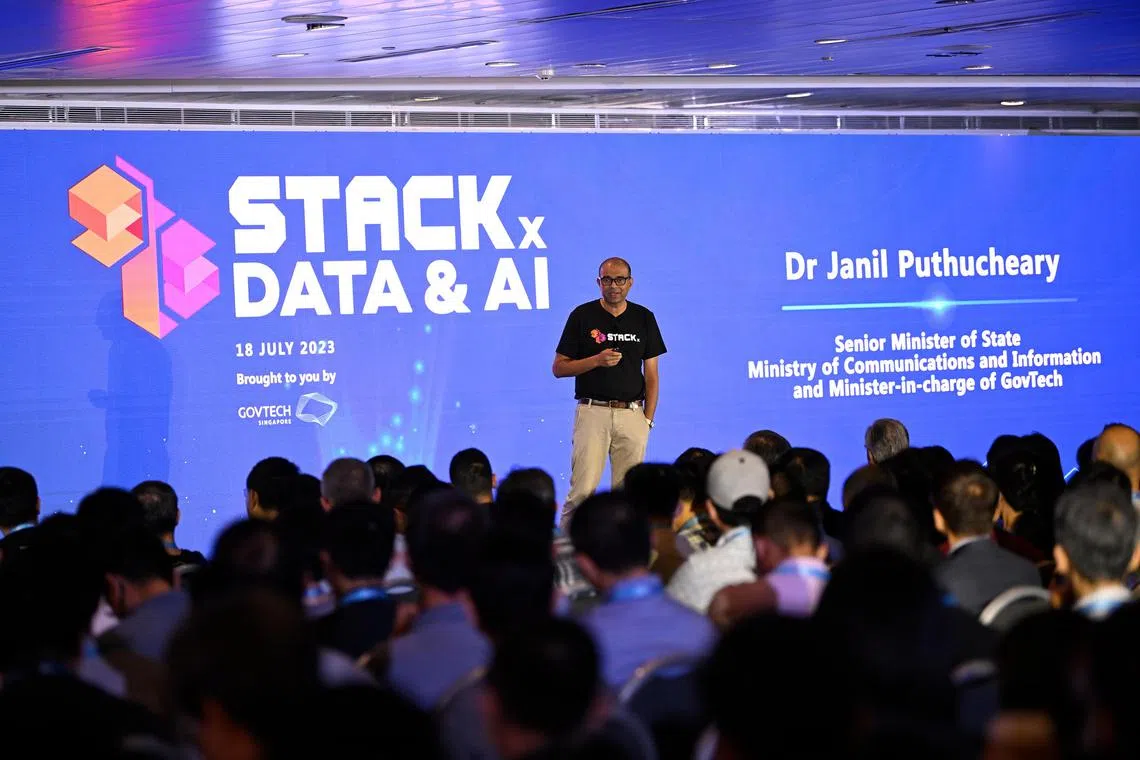4,000 civil servants using government Pair chatbot for writing, coding
Sign up now: Get ST's newsletters delivered to your inbox

Senior Minister of State for Communications and Information Janil Puthucheary at the opening address of tech conference STACKx Data & AI 2023.
PHOTO: GOVTECH
Follow topic:
SINGAPORE - Some 4,000 civil servants are using a government chatbot based on ChatGPT to assist them with writing, research and coding, in a trial of artificial intelligence (AI) bots to boost productivity within the government and better benefit the public.
The writing and research bot, called Pair, was developed by the Open Government Products team at GovTech to generate quick responses for public officers.
The chatbot “seems to be working well”, Senior Minister of State for Communications and Information Janil Puthucheary said in his opening address at tech conference STACKx Data & AI 2023 on Tuesday.
Pair will allow the secure and efficient use of large language models as a writing assistant within the government space, and also provides “a sparring partner for ideas”, he said.
Large language models use AI to process and generate natural language or human-like text by learning patterns and structures from vast amounts of training data.
A security arrangement between the Government and Azure OpenAI – an arm of Microsoft that offers coding and language AI models – also ensures that confidential information is kept private within ministries and unavailable to Microsoft.
GovTech said plans are under way to progressively roll out the chatbot to around 150,000 government staff in all agencies.
The agency is also in the nascent stages of testing large language models to upgrade SupportGoWhere, a portal for locals to search and apply for government aid.
Currently, SupportGoWhere users have to manually browse through the website themselves, or use the “Support Recommender” quiz, where they answer multiple-choice questions to narrow down the list of support schemes that might be relevant to them.
Incorporating AI into SupportGoWhere will allow users to describe their problem in their own words and get a response on what assistance they can apply for and where to get it.
“If we get this approach right,” said Dr Janil, “citizens will be able to express their personal story without necessarily knowing how the schemes and support of the government are structured, which is something you still have to know today.”
Pair and an upgraded SupportGoWhere are part of the first tranche of AI use cases in the government.
Public officers are also being trained to improve their data and AI literacy skills through GovTech’s digital literacy programme, ePrimer, which has been refreshed to incorporate concepts such as generative AI, large language models and prompt engineering.
The four-hour course comprises five modules with videos and real-life case studies contextualised to the government sector.
Members of the public can take advantage of certain ePrimer modules on the Singapore Government Developer Portal to pick up these general concepts.

